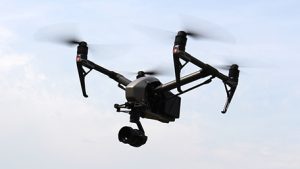 The most popular “consumer” drones typically use 4 motors and propellers (quadcopter) to generate lift and movement. Larger commercial drones use 6 (hexacopter), 8 (octocopter) or more.
The most popular “consumer” drones typically use 4 motors and propellers (quadcopter) to generate lift and movement. Larger commercial drones use 6 (hexacopter), 8 (octocopter) or more.
One of the most common problems when flying Remotely Piloted Aircraft Systems (RPAS), other than pilot error, is motor failure, or even propeller loss. Obviously, in either scenario there’s the danger of damage to your drone (uncontrolled landing) as well as danger to property or injuries to innocent bystanders should you lose control of your drone due to motor failure or propeller loss.
A lot of the larger drones have software that can compensate for the loss of one motor or propeller, being able to balance the loss of lift with the remaining engines, very much like a large airliner losing 1 of 4 engines. However, the loss of lift from one of 4 motors/propellers on a smaller drone (losing 25% of lift) presents a far greater challenge and can easily lead to the loss of your expensive drone.
There’s little that can be done to prevent motor failure, other than taking good care of your Drone and carrying out any recommended, regular, maintenance. However, there are steps that can be taken to minimise the loss of a propeller. To this end, the Civil Aviation Authority (CAA) has issued a list of recommendations to reduce the likelihood of propeller detachment for UAS (Unmanned Aerial Systems) in the Open and Specific categories
- Follow the manufacturer’s instructions for removing/installing propellers.
- Check the condition of all propellers before each flight to ensure they are all in good condition.
- Do not use aged, chipped, or broken propellers.
- Check the hub/root and propeller attachment points as well as the surface and edges.
- Only use original or manufacturer approved parts.
- Do not mix propeller types. When different types of propellers are approved for use, all propellers fitted must be the same type
- Consider adding cross-checks to your pre-flight procedures to double-check installation, especially where the propellers are regularly removed/attached for transportation
And remember, it’s possible that should you have an accident, and had not followed the guidelines, any insurance claims could be refused.
